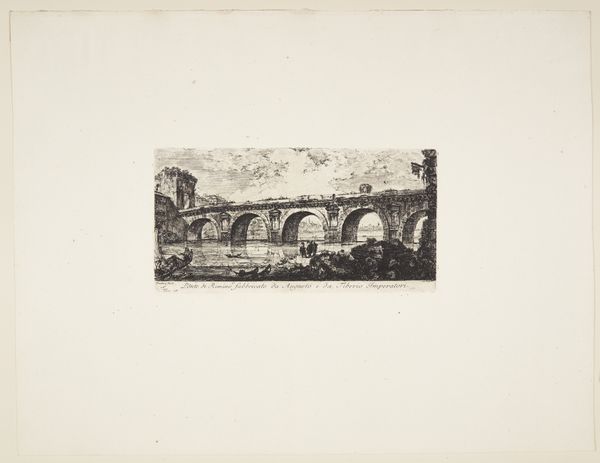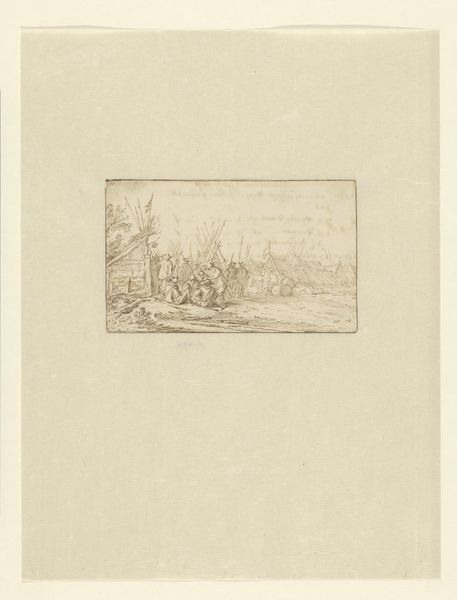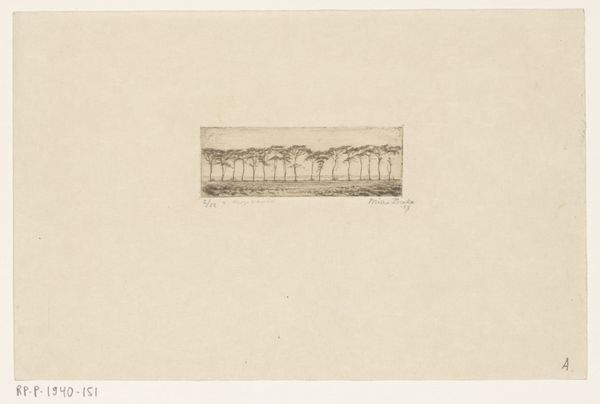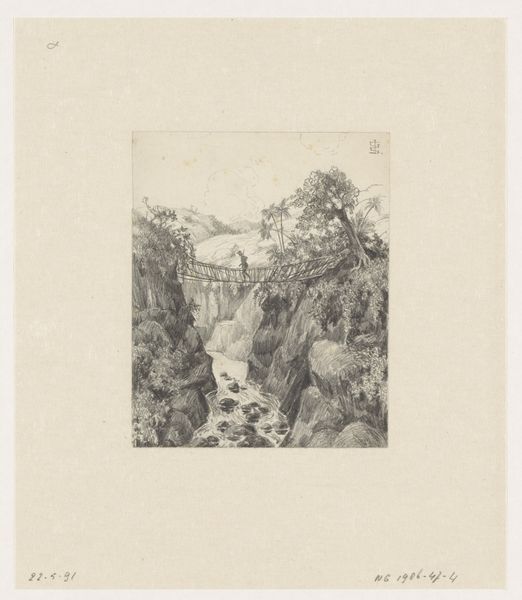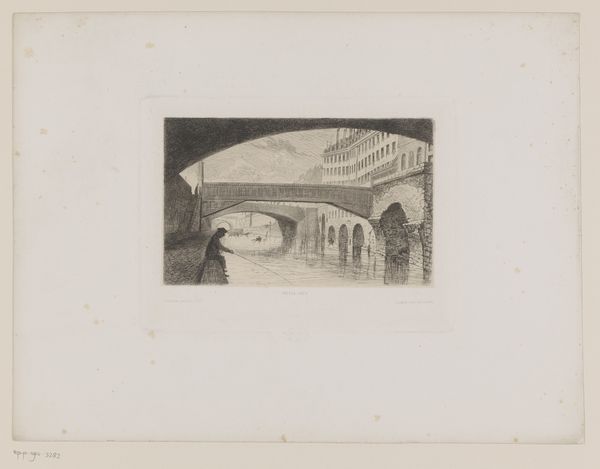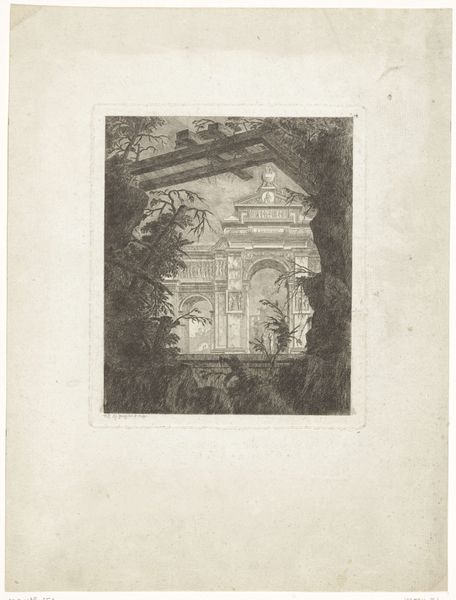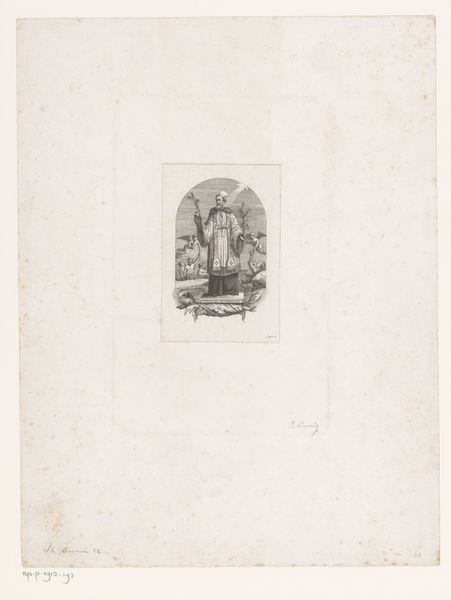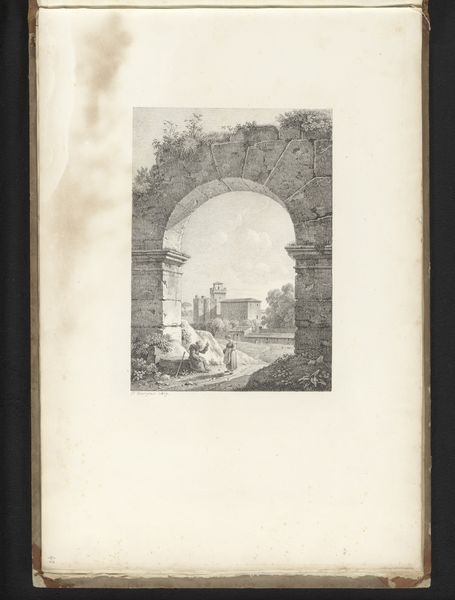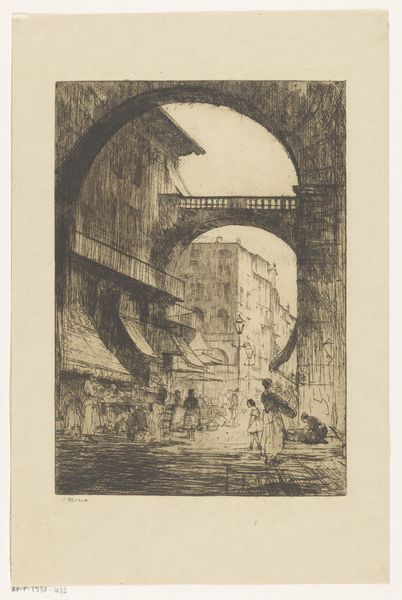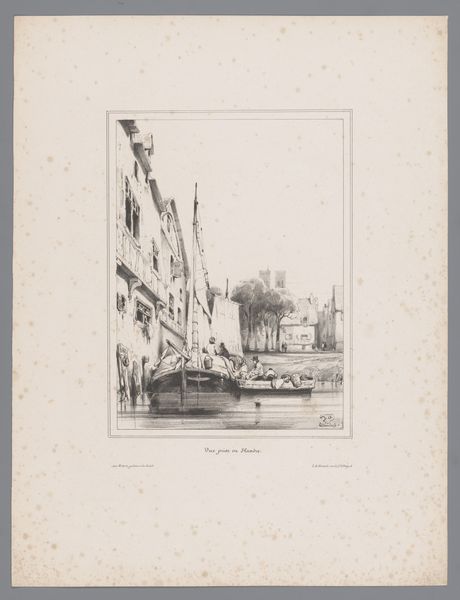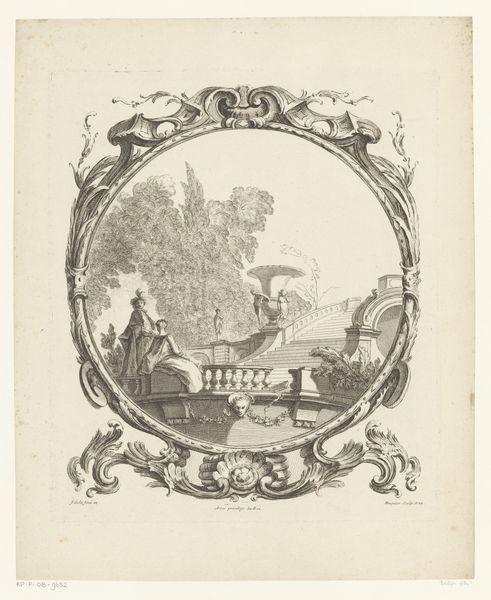
drawing, paper, ink
#
drawing
#
dutch-golden-age
#
landscape
#
paper
#
ink
#
genre-painting
Dimensions: height 157 mm, width 88 mm
Copyright: Rijks Museum: Open Domain
Curator: Looking at Jan de Bisschop’s "Binnenkant van de Burcht te Leiden," created between 1648 and 1671, currently held at the Rijksmuseum, I'm immediately drawn to the architectural rendering. There's such clarity in the lines describing the burcht. What captures your attention first? Editor: Well, it's the social context of the drawing for me, those figures populating the space of the burcht. I'm compelled to think about civic identity and representation within Dutch society during the Golden Age, who these individuals are and their implied relationship to power, privilege, perhaps even resistance. Curator: The figures certainly do animate the structure, adding a layer of narrative. It's all carefully rendered in ink on paper; considering his likely access to materials and relative ease of production, compared to say, oil paints, do you think this informs its accessibility or intended audience? Editor: It’s an important point. Think about the social and political history embedded in the materiality itself. Ink and paper enabled wider distribution and potentially a broader audience. Bisschop's choice makes me wonder how these images functioned as a tool for shaping public opinion. The drawing offers an interpretation of civic space to the people of Leiden, but who, precisely, did it reach, and how was that portrayal perceived? Curator: Absolutely, we can infer levels of reception. From my perspective, I am also drawn to the skill evident in capturing the light playing across the stone and figures. It emphasizes the importance of the structure as a built environment; you feel its weight, its permanence, the very labor invested in its construction. Editor: I agree. The strategic placement of the figures also leads to questions about what type of historical narratives this image is generating. It gives form to Dutch cultural and national consciousness, which begs questions about its purpose and intended impacts. Curator: These observations add depth to an image which appears, at first glance, a simple city rendering. Considering the context, the materials, and those depicted, the 'Binnenkant van de Burcht te Leiden' becomes such a complex document of its era. Editor: Indeed, de Bisschop's work here provides such interesting entry points for reevaluating traditional understandings of art as merely aesthetic and instead seeing its social function.
Comments
No comments
Be the first to comment and join the conversation on the ultimate creative platform.
